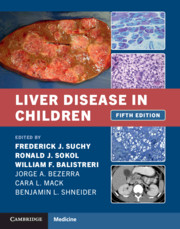Book contents
- Liver Disease in Children
- Liver Disease in Children
- Copyright page
- Contents
- Contributors
- Preface
- Section I Pathophysiology of Pediatric Liver Disease
- Section II Cholestatic Liver Disease
- Section III Hepatitis and Immune Disorders
- Section IV Metabolic Liver Disease
- Section V Other Considerations and Issues in Pediatric Hepatology
- Index
- References
Section I - Pathophysiology of Pediatric Liver Disease
Published online by Cambridge University Press: 19 January 2021
- Liver Disease in Children
- Liver Disease in Children
- Copyright page
- Contents
- Contributors
- Preface
- Section I Pathophysiology of Pediatric Liver Disease
- Section II Cholestatic Liver Disease
- Section III Hepatitis and Immune Disorders
- Section IV Metabolic Liver Disease
- Section V Other Considerations and Issues in Pediatric Hepatology
- Index
- References
- Type
- Chapter
- Information
- Liver Disease in Children , pp. 1 - 106Publisher: Cambridge University PressPrint publication year: 2021



